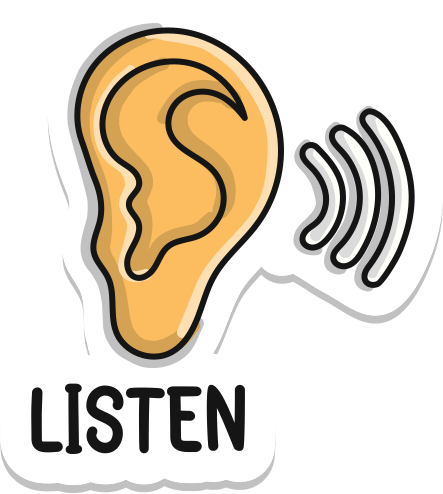Link #47 🌱🌿🌳 L&D Consulting: Three listening levels
Fresh perspectives and links for learners and L&D professionals.
About Listening
We’re continuing the deep dive into the RCAA Consulting toolkit, built on the RCAA Framework: Relationship - Conversation - Agreement - Action.
In the framework, Conversation has 3 relevant aspects:
Listening - ways of listening and how suited they are for the conversations with the clients
Questions - ways through which various kinds of questions shape the conversations
Visualisation - ways through which visualization supports the conversations
I’ve previously covered the Relationship facet: Positioning, Trust and Notes.
Next time I’ll cover Questions as an essential aspect of consulting conversations.
I’ve researched and practiced lots of listening, in various ways and modes. The coaching profession has a whole body of knowledge around listening. Here is a model I’ve found useful in practice for listening when having consulting conversations with clients:
The three levels of listening
Selective listening: You pay attention only to the parts that you have a direct interest for (e.g. explicit need, budget, timeline etc.). You don’t see the links between messages and you can’t usually form a big picture based on what the other person is communicating.
Focused listening: Your full attention goes towards the person who is speaking. You focus on what they have to say. You allow them to finish what they have to say. You ask follow-up questions based on what they’ve said.
Empathic listening: Your full attention goes towards the person who is speaking. You carefully listen to the words being used. You try to figure out the emotions being expressed during the conversation.
3* Advanced: You listen to what is not being mentioned, to what words aren’t being mentioned during the conversation. You pay attention to which emotions are missing from the conversation.
Given the fact that higher levels of listening usually require higher levels of energy and we are energy-optimizing beings, it’s probably usually hard to practice level 3 or 3* listening the whole day or week, even if you intend to gain the richness of information and insights these levels bring.
In my experience, the simple habit of asking myself before a client conversation: “Which level of listening do I intend to practice now?” helps me calibrate the proper level, given the context (e.g. importance of conversation, current levels of energy, realistic levels of presence I can have in the conversation etc.).
✼
When I’m training consultants in this area, I invite them to do two exercises:
First one is about having a part of a (simulated) consulting conversation: then introduce the 3 levels of listening and invite learners to reflect on which listening level they’ve just practiced.
The second one is to invite them to ask the question above (about the intended level of listening) before going into a new (simulated) consulting conversation: then invite them to reflect on how much they achieved the intended level of listening and what they’ve just learned from the experience.
✼
If you are reading this, you could do these two exercises applied to your day-to-day practice:
Which listening levels have you used in your last consulting conversation(s)?
Which listening level do you intend to practice in your next consulting conversation(s)?
As you can see, I’m not saying that any listening level is better than the other in all situations. I’m inviting you to become intentional in using these listening levels to increase the quality and positive outcomes from your consulting conversations.
Consulting is about understanding context and nuances - and listening during conversations is one of the ways to practice this kind of understanding.
I’m curious to learn from your listening practice: what have you tried and what helps you, when it comes to listening during conversations with clients?
Keep on listening,
Bülent
As a learner and knowledge creator across fields, I enjoy advising (as a side activity) OD and L&D teams on how to create more impact with the limited resources they have at hand.
My main activity is to advise CEOs of Tech companies on Strategy.
See also: LinkedIn / Strategy & Org Design Goodies and Personal Strategy newsletters / Affiliations: IASP, APF, EODF, IAF, EMCC and IG



